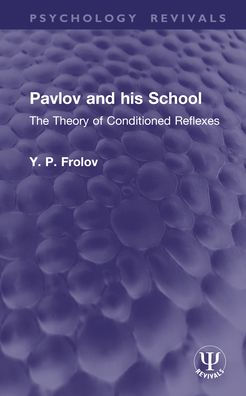To the specialist its account of the work of Pavlov’s predecessors, which was not generally known, and of Pavlov’s philosophy, should have particular interest, giving as it does a clear picture of the circumstances which led to the evolution of Pavlov’s method of investigating higher nervous activity.
One of the most cited psychologists of the twentieth century, Pavlov's legacy lives on today in many forms, including through his studies of classical conditioning, which continue to be central to modern behaviour therapy.
To the specialist its account of the work of Pavlov’s predecessors, which was not generally known, and of Pavlov’s philosophy, should have particular interest, giving as it does a clear picture of the circumstances which led to the evolution of Pavlov’s method of investigating higher nervous activity.
One of the most cited psychologists of the twentieth century, Pavlov's legacy lives on today in many forms, including through his studies of classical conditioning, which continue to be central to modern behaviour therapy.

Pavlov and his School: The Theory of Conditioned Reflexes
346
Pavlov and his School: The Theory of Conditioned Reflexes
346Hardcover

Product Details
| ISBN-13: | 9781041026679 |
|---|---|
| Publisher: | Taylor & Francis |
| Publication date: | 06/02/2025 |
| Series: | Psychology Revivals |
| Pages: | 346 |
| Product dimensions: | 5.44(w) x 8.50(h) x (d) |
